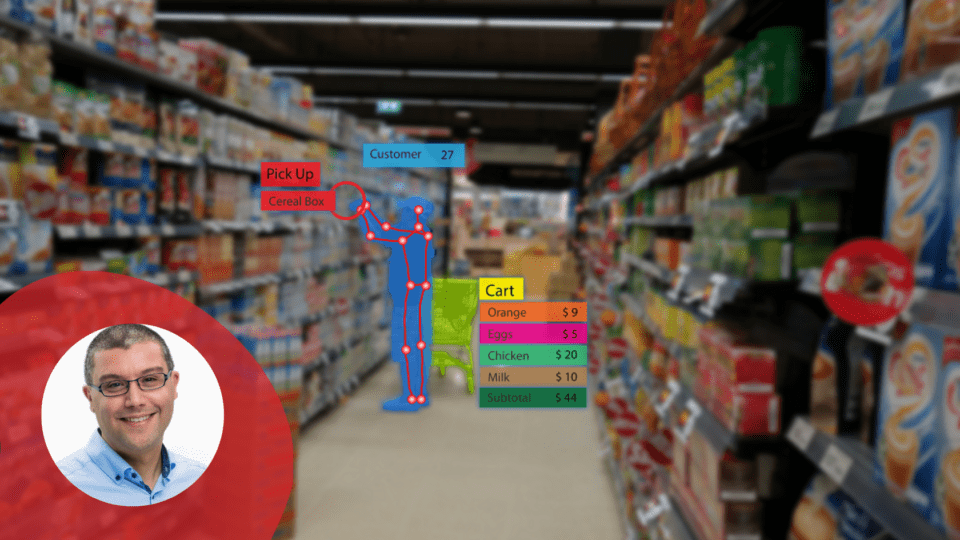The past few years have been a rollercoaster ride for the retail industry. The pandemic and related supply chain disruptions led to shuttered storefronts and rampant bankruptcies. Then, last year, in-store sales grew faster than online sales, while ecommerce stocks took a big hit.
A survey from this year’s World Retail Congress suggests that the uncertain times aren’t over for the industry. Retailers cited rising costs, declining consumer spending and supply chain volatility as their top concerns. The survey also found that less than 13% of retail organizations are investing in technology to tackle these challenges, instead remaining focused on short-term fixes like increasing prices and running marketing campaigns.
That’s worrying in an increasingly competitive environment where customer engagement and user experience are becoming more important than ever. Technology — specifically edge computing — provides the foundation for a better customer experience, real-time inventory management, enhanced security and loss prevention and in-store analytics.
Customer Experience
It’s been five years since Amazon Go opened to the public, creating the template for the retail store of the future by allowing shoppers to skip the checkout line entirely. Innovations have slowed since then, but edge computing will usher in a new wave of personalization and self-service for modern shoppers.
Advertisement
At the top of the list is computer vision — a field of artificial intelligence that enables computers to interpret digital images or video. Because it’s not fast or cost-efficient enough to send these images to the cloud for analysis, the processing of those images must happen at the edge.
Computer vision at the edge would create more personalized shopping experiences that synchronize in-person, online and mobile interactions. Your favorite store would recognize you when you walk in and already know your preferences (perhaps through information provided for a customer loyalty program), so you’d get an experience customized for you. That could include customized digital signage and instant discount offers based on your purchase history.
Those same cameras and sensors also are at the heart of the grab-and-go checkout system featured in Amazon Go stores. The store knows what you took from the shelf and put in your cart and can charge you for it on your account that’s linked to their system.
Inventory Management
Edge technology gives retailers greater insight into what they have in their inventory, cutting down on stockouts and providing real-time insight into the best-selling items. Sensors, such as RFID tags, are attached to each product and communicate immediately when an item leaves the shelf. By continually assessing and updating stock levels, edge-enabled inventory management systems give managers valuable context for their purchasing decisions.
Security
Theft is, unfortunately, an unavoidable aspect of retail. The National Retail Foundation estimated that retail loss is a nearly $100 billion problem, with evidence that the problem is growing. By taking advantage of the local processing of video feeds (rather than waiting for cloud access), security teams could act more quickly against suspicious activities or fraudulent behavior.
Self-checkout kiosks are ubiquitous today, but they add to the security challenges retailers face. The “banana trick,” where a customer rings up one product using the code of something less expensive, is a real issue. In a case like this, computer vision combined with RFID sensors can make a real difference. A camera can detect the difference between an article of clothing and a television, but probably not the difference between a Rolex and a Timex. AI models that can coordinate video feeds, RFID and point-of-sale transaction logs, all processed at the edge in real time, can help address price tampering and ensure that customers leave with the products the store believes they have.
There’s also the matter of securing the computer hardware that runs the store operations. Many retailers are using in-store computers as edge devices but aren’t locking them away. A sensitive piece of hardware could be compromised by something as innocuous as someone plugging in their phone. On the more sinister side, the hardware could be open to tampering and theft. That makes it critical to implement edge devices designed to be managed remotely when considering implementing edge computing in a busy retail environment.
The World Retail Congress report is very telling about the current mindset of retail executives. It’s tough to think past short-term solutions for pricing and marketing and plan for the more long-term success of the business. But the technology is available to address those long-term concerns while making a quick impact on the short-term problems as well. It’s certainly worth noting that many retailers have invested heavily in legacy software, and those systems can’t simply be abandoned. Any edge-native applications must be able to integrate with existing systems.
It may not be particularly glamorous to admit, but the future of shopping is based on data. Retailers will use it to enable real-time interactions with their customers and automation that frees up supply-chain constraints. Moving retail infrastructure to the edge is the key to making that future happen.
Said Ouissal is the CEO and Founder of ZEDEDA. He founded the edge software infrastructure company based on his strong conviction that this decade will be all about edge computing, and as with previous large shifts, this trend signals a new and radical change of existing OT, network and computing architectures.









